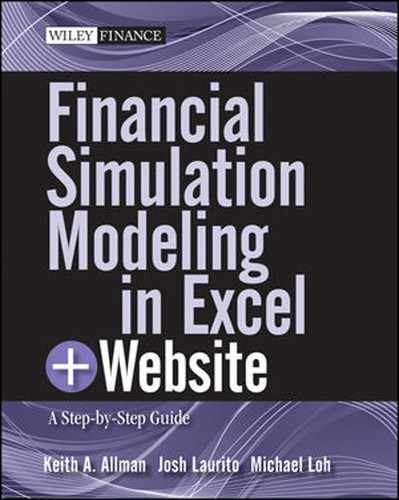DISCUSSION ON ERRORS
The Hull-White tree method allows us to price options based on certain assumptions made about the characteristics of our underlying assets. When pricing an entire portfolio of derivatives using this method, it would be beneficial to understand how confident we are of the projected price. To accomplish this, we have to somehow characterize the accuracy of the tree itself. Unfortunately, this is nearly impossible since we have not yet developed a method for predicting the future. We just don't know what the actual price will be. Therefore, from the standpoint of our analysis, the answer we get is the actual answer and our error when using this model stems mainly from the number of time steps used in the analysis. Remember, as we increase the number of steps used, we also increase the accuracy of our result. At small-enough intervals, the answers will eventually converge; that is, the difference between finer and finer intervals will become negligible.
In an ideal situation where computational workload is a nonissue, we can run every simulation for every option in our portfolio with thousands of time steps each. However, this is not always practical in reality, as we must limit the number of steps used in order to produce results in a timely fashion. When we limit our simulation in this manner, the price we get will be a certain amount off from the actual price we would have gotten had we not limited our simulation. This difference is our error. Therefore, to characterize the error of our run we would first have to determine the rate of convergence for the particular asset we are analyzing. We can do this by running our simulation, with a given drift, volatility, and yield curve, multiple times with many timing intervals. Once we have this curve, we can choose the appropriate interval size based on the accuracy needed for a particular analysis.
Unfortunately, since the Hull-White tree is a highly nonlinear process, we have no reason to expect that the rate of convergence would be the same for assets having different drifts and volatilities. If we had a portfolio composed of many assets with different drifts and volatilities, we cannot simply assume they would all have the same errors associated with it. In such a scenario, it would be beneficial to produce many convergence curves for different sets of drifts and volatilities. These curves can then be tabulated, and the appropriate curve can then be used for a particular asset in the portfolio. The error associated with the entire portfolio can be calculated by using equation 2.17.
If, on the other hand, we were to use the Black-Scholes model for our analysis, quantifying the error would be far simpler. The uncertainty from solving equations 4.40 and 4.41 are due purely from the uncertainties in the drift and volatility and can be computed analytically by using equation 2.18.
